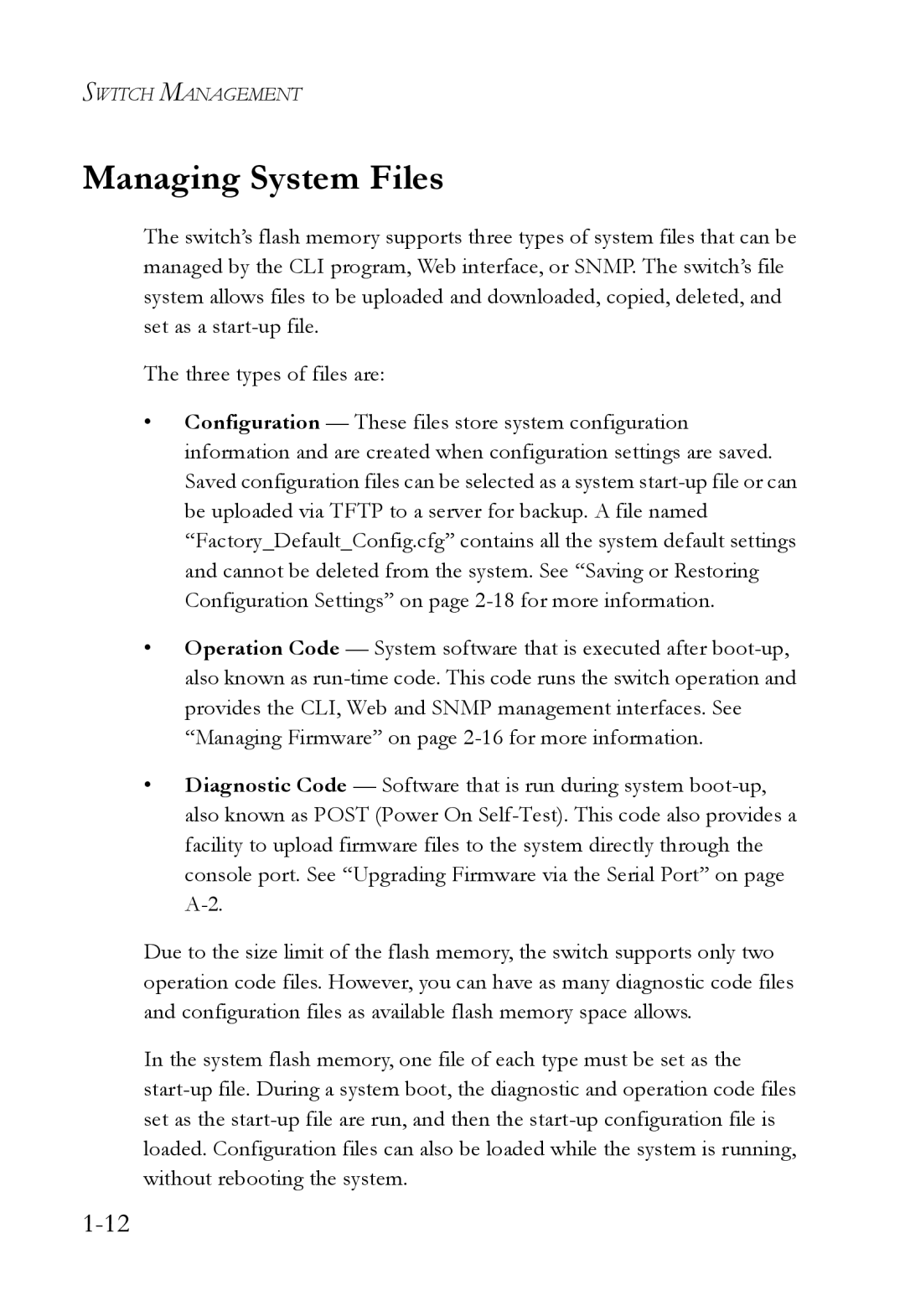SWITCH MANAGEMENT
Managing System Files
The switch’s flash memory supports three types of system files that can be managed by the CLI program, Web interface, or SNMP. The switch’s file system allows files to be uploaded and downloaded, copied, deleted, and set as a start-up file.
The three types of files are:
•Configuration — These files store system configuration information and are created when configuration settings are saved. Saved configuration files can be selected as a system start-up file or can be uploaded via TFTP to a server for backup. A file named “Factory_Default_Config.cfg” contains all the system default settings and cannot be deleted from the system. See “Saving or Restoring Configuration Settings” on page 2-18for more information.
•Operation Code — System software that is executed after boot-up, also known as run-time code. This code runs the switch operation and provides the CLI, Web and SNMP management interfaces. See “Managing Firmware” on page 2-16for more information.
•Diagnostic Code — Software that is run during system boot-up, also known as POST (Power On Self-Test). This code also provides a facility to upload firmware files to the system directly through the console port. See “Upgrading Firmware via the Serial Port” on page A-2.
Due to the size limit of the flash memory, the switch supports only two operation code files. However, you can have as many diagnostic code files and configuration files as available flash memory space allows.
In the system flash memory, one file of each type must be set as the start-up file. During a system boot, the diagnostic and operation code files set as the start-up file are run, and then the start-up configuration file is loaded. Configuration files can also be loaded while the system is running, without rebooting the system.
